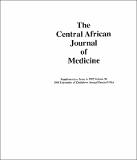| dc.contributor.author | Kasule, J. | |
| dc.contributor.author | Chipato, T. | |
| dc.contributor.author | Zinanga, A. | |
| dc.contributor.author | Maigurira, J. | |
| dc.contributor.author | Mbizvo, M. | |
| dc.contributor.author | Maigurira, J. | |
| dc.coverage.spatial | Zimbabwe. | en |
| dc.date.accessioned | 2016-07-01T14:49:38Z | |
| dc.date.available | 2016-07-01T14:49:38Z | |
| dc.date.issued | 1992-08 | |
| dc.identifier.citation | Kasule, J. et al., (1992) Norplant in Zimbabwe: preliminary report, Central African Journal of Medicine, vol. 38, no. 8, pp. 321-324. Harare: CAJM. | en |
| dc.identifier.issn | 0008-9176 | |
| dc.identifier.uri | https://opendocs.ids.ac.uk/opendocs/handle/20.500.12413/12042 | |
| dc.description | A research study on the introduction and effective use of Norplant as a family planning and birth control method used by women of child-bearing age, in Zimbabwe. | en |
| dc.description.abstract | During an ongoing study of a pre-introduction trial of Norplant in Zimbabwe, 197 women had the subdermal implant of six capsules containing levonorgestrel inserted between June and December 1991, atParirenyatwa, Harare Hospital and Spilhaus. Acceptability and efficacy were high and no significant side effects had been observed. Three implants were removed due to local infection, Our initial experience indicates that the Norplant continuation rate is much higher than for any other reversible method of contraception and it is highly acceptable as a long term contraceptive. | en |
| dc.language.iso | en | en |
| dc.publisher | Faculty of Medicine, Central African Journal of Medicine (CAJM), University of Zimbabwe (UZ.) | en |
| dc.rights.uri | http://creativecommons.org/licenses/by-nc-nd/3.0/ | en |
| dc.subject | Gender | en |
| dc.title | Norplant in Zimbabwe: preliminary report | en |
| dc.type | Article | en |
| dc.rights.holder | University of Zimbabwe (UZ), Faculty of Medicine. | en |


